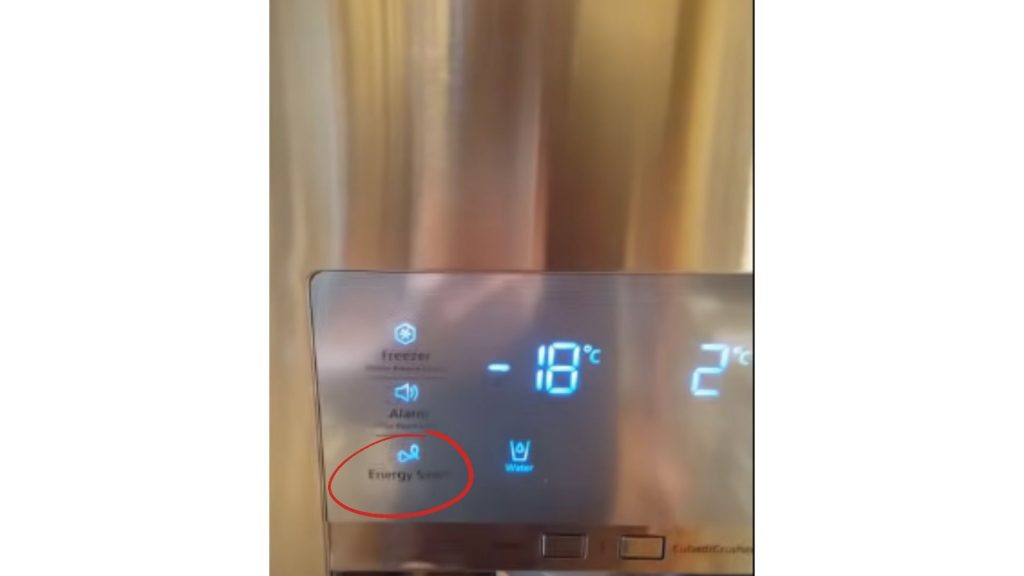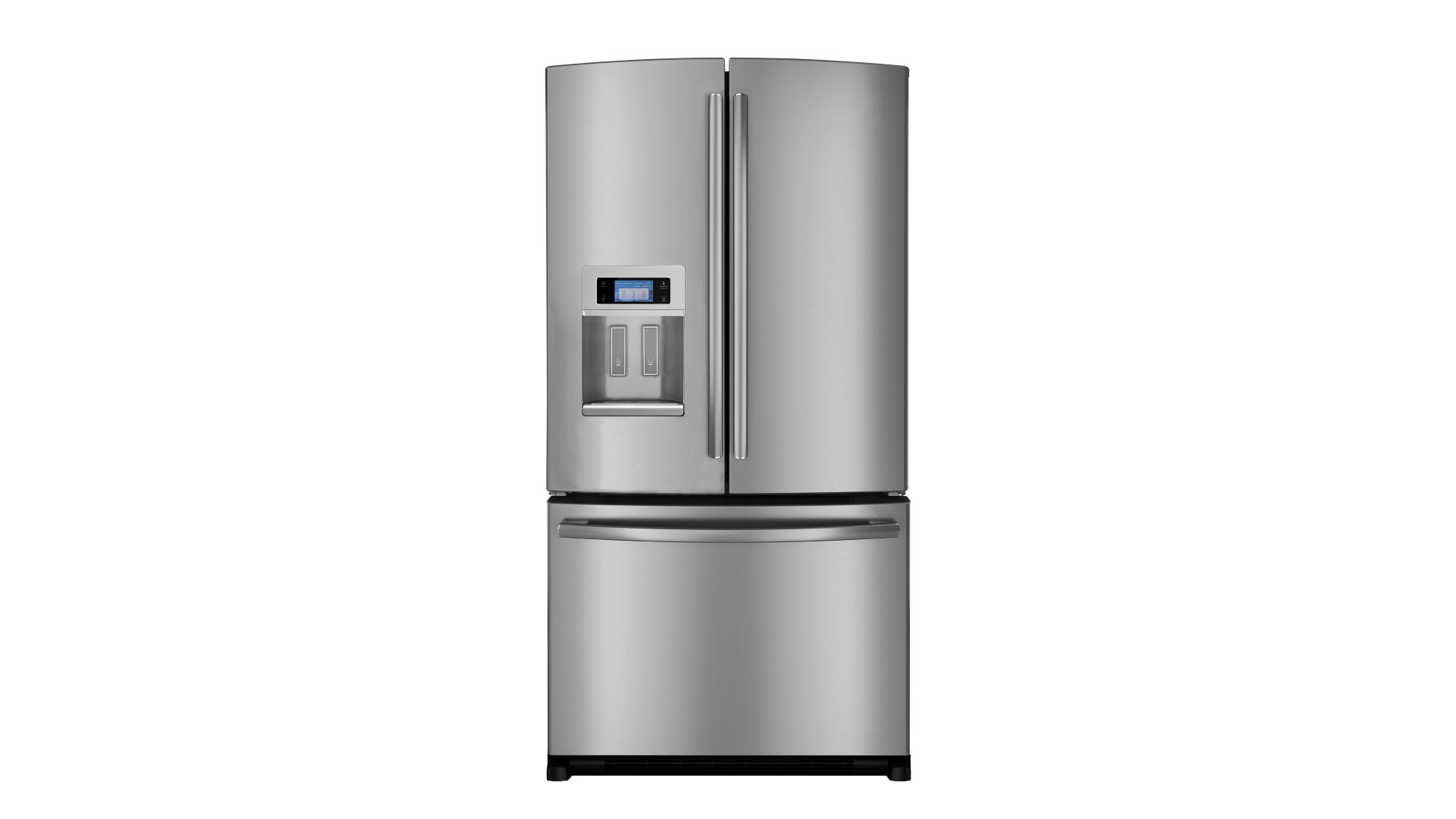Energy-saving tools and techniques are all the rage these days because everyone wants to do their part to protect the environment.
What Does Energy Saver Do On Samsung Refrigerator?
‘Energy Saver’ on Samsung refrigerator saves energy by deactivating the fridge compartment, which makes sense. The appliance won’t use as much electricity if the fridge compartment is off. But that is not all. The device will also stop the heater in the door.
Refrigerator doors have a heater that prevents condensation from accumulating. Condensation usually forms because consumers keep opening and closing the door.
You can’t see these heaters, even though they play a vital role. But the fridge doesn’t need this function to keep your food cold. Then again, Samsung encourages consumers to deactivate ‘Energy Saver’ if the condensation on the doors becomes a problem, proving that the feature can occasionally do more harm than good.
This is all Samsung has said about ‘Energy Saver.’ Some consumers are convinced that the function does more, but Samsung has no intention of revealing its secrets to rival refrigerator manufacturers. You don’t have to know how this feature works to use it.
Where Is The Energy Saver Button on Samsung Refrigerator?

You will find it on the display, next to the words ‘Energy Saver.’ The Energy Saver button looks like a two-prong plug attached to a bulb.
How Do I Turn On/Off Energy Saver On Samsung Refrigerator?
You activate the energy saver function by pressing the button with the energy saver icon. The ‘Energy Saver’ function is activated by default in some models. Pressing the button will shut it off.
This assumes that your appliance has an energy saver button. Some Samsung models provide an ‘Eco Mode’ which performs a similar function. It improves efficiency by reducing power consumption.
Check the manual to get a better understanding of the workings of this function, not to mention the best way to activate and deactivate it. Sometimes, the button refuses to respond because of a glitch or malfunction.
If you’re lucky, a simple reset will solve this problem.
You perform a reset by unplugging the refrigerator, waiting a few minutes, and reconnecting it to the wall outlet.
A reset can resolve most glitches. If yours have persisted, consult a technician.
Better yet, reach out to Samsung’s customer support and tell them that your energy saver has refused to turn off. The company may void your warranty because a technician tampered with the device.
When Should I Use Energy Saver Mode On Samsung?
There is no right time to use the energy saver mode. Use it whenever you need to save money. Admittedly, this mode won’t drastically impact your utility bill. Don’t expect hundreds of dollars in savings.
Although, the feature will make a difference in the long run. It is common practice to use the energy saver mode when the refrigerator has little food.
When Should I Not Use Energy Saver Mode?
Two variables will compel you to deactivate the energy-saver mode.
- The first is condensation. If it appears on the door, you need to turn the heaters on, which means deactivating the ‘Energy Saver.’
- Additionally, you should keep an eye on the food. The energy saver function saves energy by reducing power consumption. Don’t be surprised if the temperature rises. If the refrigerator cannot keep your food as cold as you require, turn the energy saver feature off.
There is no point in saving a few dollars a month using this function when your food is rotting.
Best Tips To Save Energy On Samsung Refrigerator Rather Than Using Energy Saver Mode
The energy saver mode is convenient, but as you now realize, it has drawbacks. For instance, it allows condensation to accumulate on the door. In the worst-case scenario, it will also prevent the refrigerator from preserving your food. Therefore, you should consider using the following techniques to save energy:
1). Purchase Energy-Efficient Model
You should start by purchasing an energy-efficient Samsung refrigerator. Like every electronic device, Samsung fridges are not all the same. Some are more efficient than others. If you check the manual, it will show you the amount of energy the appliance uses.
Some models will also reveal the money you will save because of their efficiency. The most efficient refrigerators will reduce your utility bill without relying on energy-saving functions.
2). Use A Small-Sized Model
Pay close attention to the size of the refrigerator. Limit your selection to smaller models that fit your needs. Don’t waste money on the largest appliances when you don’t need them.
3). Turn The Icemaker & Dispenser OFF
You don’t have to waste money on unnecessary accessories. For instance, refrigerators with icemakers and dispensers use more energy than appliances that don’t have these tools. If you already bought your fridge and can’t afford to replace it with a model that doesn’t have those components, you have another option.
Turn the icemaker and dispenser off. You can even ask a technician to remove them, eliminating the temptation altogether.
4). Have Proper Space
Refrigerators require plenty of clearance on all sides to release the heat from the compressor. Aim for a minimum of 5cm. Without proper ventilation, the appliance will use more energy to keep your food cool. Pay attention to the clearance on either side, the back, and the top.
5). Keep The Refrigerator Away From Heat Sources
This goes without saying. Keep the appliance away from heat sources such as stoves. The fridge will work harder to maintain cold conditions because of the heat ovens and air conditioners generate. The heat from those devices can cause irreversible harm to some appliances.
Sunlight is just as problematic. Don’t leave the fridge in an area that exposes the appliance to direct sunlight. The sun will compromise the refrigerator’s ability to keep the temperature low.
6). Don’t Open The Door Unless It Is Necessary
This is another obvious consideration. Stop leaving the door open. Every time you open the door, cold air escapes. The longer the door remains open, the harder the refrigerator must work to lower the temperature in the internal compartments.
The frequency with which you open the doors is just as important. Don’t open the door unless it is necessary. This is why homeowners are encouraged to organize their food. People with disorganized fridges leave the door open for longer periods because they spend a lot of time looking for what they want.
7). Keep The Fridge As Full As Possible
The appliance spends less energy keeping the temperature low when the compartment is full because it has less air to cool. However, don’t add so much food that it interrupts the air circulation. Fill two-thirds of the compartment.
If you don’t have enough good, add water jugs and bottles. But again, you shouldn’t interfere with the airflow. Keep the food away from the vents.
Related post:

